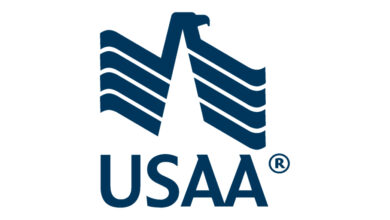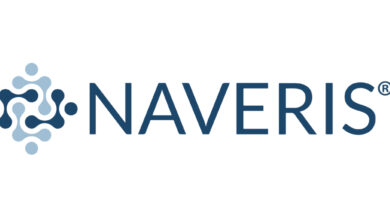East West Bancorp Reports Record Net Income for 2021 of $873 Million and Diluted Earnings Per Share of $6.10, Both Up by 54% From the Prior Year; Increases Dividend by 21%

PASADENA, Calif.–(BUSINESS WIRE)–East West Bancorp, Inc. (“East West” or the “Company”) (Nasdaq: EWBC), parent company of East West Bank, today reported its financial results for the full year and fourth quarter of 2021. For the full year 2021, net income was $873.0 million, or $6.10 per diluted share. For the fourth quarter of 2021, net income was $217.8 million, or $1.52 per diluted share.
“East West achieved record earnings in 2021. Our record total revenue of $1.8 billion grew by 13% year-over-year and our record net income of $873 million grew by 54%,” stated Dominic Ng, Chairman and Chief Executive Officer of East West. “We delivered an attractive return on assets of 1.5% and a return on tangible equity1 of 17.2% in 2021. Our outstanding financial performance reflected robust net interest income and fee income growth, industry-leading efficiency, and substantially improved asset quality. Year-over-year, nonperforming assets decreased by 56% and criticized loans declined by 32%.”
“Total loans reached a record $41.7 billion as of December 31, 2021. Loans grew by $4.3 billion or 12% year-over-year, excluding the impact of the Paycheck Protection Program. Total deposits grew to $53.4 billion as of December 31, 2021, an increase of $8.5 billion or 19% year-over-year, driven by strong growth in noninterest-bearing demand deposits. Demand deposits now make up 43% of our deposits, up from 36% a year ago.”
“We wish to thank our team of more than 3,000 associates who work tirelessly to support our customers in their banking needs. Our ability to deliver strong financial performance year in, year out is a direct result of the hard work and dedication of our associates and their commitment to serve our customers with excellence,” continued Ng.
“We are entering 2022 from a position of strength and are pleased to announce a 21% increase in our common stock dividend. We expect to deliver yet another year of outstanding profitability for our shareholders, supported by solid loan and deposit growth, healthy capital levels, and the asset sensitive nature of our balance sheet in a rising interest rate environment,” concluded Ng.
FINANCIAL HIGHLIGHTS
|
| Twelve Months Ended | Year-over-Year Change | |||||||
| ($ in millions) | December 31, 2021 | $ | % | ||||||
| Total Loans (incl. PPP) | $ | 41,694 | $ | 3,302 | 9 | % | |||
| Total Loans (excl. PPP) |
| 41,160 |
| 4,336 | 12 |
| |||
| Total Deposits |
| 53,351 |
| 8,488 | 19 |
| |||
| Total Revenue | $ | 1,817 | $ | 205 | 13 | % | |||
| Net Income |
| 873 |
| 305 | 54 | ||||
| 1 | See reconciliation of GAAP to non-GAAP financial measures in Table 13. |
BALANCE SHEET
- Total Assets – Total assets reached $60.9 billion as of December 31, 2021, compared with $61.0 billion as of September 30, 2021. Year-over-year, total assets grew $8.7 billion or 17% from $52.2 billion as of December 31, 2020.
Fourth quarter 2021 average interest-earning assets of $58.9 billion grew by $704.6 million, or 5% linked quarter annualized, from $58.2 billion in the third quarter of 2021. The quarter-over-quarter growth in average interest-earning assets mainly consisted of a $1.1 billion increase in average available-for-sale (“AFS”) debt securities and a $572.4 million increase in average loans, partially offset by a $986.0 million decrease in average interest-bearing cash and deposits with banks. Excluding Paycheck Protection Program (“PPP”) loans, average loans grew by $1.0 billion, or 10% linked quarter annualized.
- Record Loans – Total loans reached $41.7 billion as of December 31, 2021, up by $1.2 billion, or 12% annualized, from $40.5 billion as of September 30, 2021. Excluding PPP loans, total loans grew by $1.5 billion, or 15% linked quarter annualized, with growth well diversified throughout our major loan categories of commercial real estate (“CRE”), commercial and industrial (“C&I”), and residential mortgage. Year-over-year, total loans grew 9% from $38.4 billion as of December 31, 2020. Excluding PPP loans, total loans grew $4.3 billion or 12% year-over-year. PPP loans totaled $534.2 million as of December 31, 2021.
Fourth quarter 2021 average loans of $40.5 billion grew by $572.4 million, or 6% linked quarter annualized. Excluding PPP loans, average loans grew by $1.0 billion, or 10% annualized, from the third quarter of 2021. The strongest growth was from average C&I loans (excluding PPP), which increased 16% linked quarter annualized. Average total CRE loans and average residential mortgage loans both increased 8% linked quarter annualized.
- Total Deposits – Total deposits were $53.4 billion as of December 31, 2021, essentially unchanged from $53.4 billion as of September 30, 2021, and up $8.5 billion or 19% from $44.9 billion as of December 31, 2020. Noninterest-bearing demand deposits totaled $22.8 billion as of December 31, 2021, down by $330.0 million, or 6% annualized, from $23.2 billion as of September 30, 2021, and up by $6.5 billion, or 40%, from $16.3 billion as of December 31, 2020. Noninterest-bearing demand deposits made up 43% of total deposits as of both December 31, 2021 and September 30, 2021, up from 36% as of December 31, 2020.
Fourth quarter 2021 average deposits of $54.3 billion grew by $819.6 million, or 6% linked quarter annualized. Growth in the fourth quarter average deposits was led by noninterest-bearing demand deposits, which increased by $850.0 million, or 15% linked quarter annualized. This was followed by 10% annualized growth in money market deposits, partially offset by decreases in time and interest-bearing checking accounts.
- Strong Capital Levels – As of December 31, 2021, stockholders’ equity was $5.8 billion, or $41.13 per common share, and tangible equity2 per common share was $37.79. Tangible equity per common share increased by 3% quarter-over-quarter and increased by 12% year-over-year. As of December 31, 2021, the tangible equity to tangible assets ratio2 was 8.88%, the common equity tier 1 (“CET1”) capital ratio was 12.8%, and the total risk-based capital ratio was 14.1%.
- Dividend Increase – The first quarter 2022 common stock dividend was increased by 21%, or seven cents per share. The new quarterly dividend is $0.40 per share, up from $0.33 per share. The new annual dividend is $1.60 per share, compared with $1.32 per share previously.
| 2 | See reconciliation of GAAP to non-GAAP financial measures in Table 13. |
OPERATING RESULTS
Full Year Earnings – Full year 2021 net income was $873.0 million, or $6.10 per diluted share, an increase of 54% from $567.8 million, or $3.97 per diluted share, for the full year 2020.
Fourth Quarter Earnings – Fourth quarter 2021 net income was $217.8 million, or $1.52 per diluted share, compared with $225.4 million, or $1.57 per diluted share, for the third quarter of 2021. Quarter-over-quarter, net income decreased by 3% and diluted earnings per share decreased by 3.5%.
Fourth Quarter 2021 Compared to Third Quarter 2021
Net Interest Income and Net Interest Margin
Net interest income (“NII”) totaled $405.7 million, an increase of 10% annualized from $395.7 million. Net interest margin (“NIM”) of 2.73% increased by three basis points from 2.70%.
- Excluding the impact of PPP loans, adjusted NII3 totaled $396.1 million, an increase of 16% annualized from $380.5 million. PPP loans contributed $9.6 million to NII in the fourth quarter, compared with $15.2 million in the third quarter.
- Adjusted NII growth reflected higher interest income from growth in loans and AFS debt securities, as well as lower interest expense because of a lower cost of funds.
- Adjusted NIM3 of 2.70% increased by six basis points from 2.64%. The quarter-over-quarter adjusted NIM expansion was driven by a favorable shift in the asset mix into higher interest earning assets, and a lower cost of deposits.
- The average loan yield was 3.59%, down two basis points from the third quarter, and the adjusted average loan yield3 of 3.56% was unchanged quarter-over-quarter.
- The average cost of funds of 0.12% decreased by two basis points from 0.14%. This reflected growth in average demand deposits, and a continued decline in the cost of interest-bearing deposits. The average cost of deposits of 0.10% decreased by two basis points from 0.12%.
Noninterest Income
Noninterest income totaled $71.5 million in the fourth quarter, compared with $73.1 million in the third quarter.
- Quarter-over-quarter, lending fees increased $3.2 million or 18%, reflecting higher syndication, trade finance and loan commitment fees. Deposit account fees increased $1.5 million or 8%, due to growth in commercial account fees.
- Interest rate contracts (“IRC”) and other derivative income was $1.9 million in the fourth quarter, compared with $7.2 million in the third quarter. The $5.2 million quarter-over-quarter decrease was due to lower customer-driven IRC revenue and a smaller favorable change in the credit valuation adjustment, compared with the previous quarter.
| 3 | See reconciliation of GAAP to non-GAAP financial measures in Table 14. |
Noninterest Expense
Noninterest expense totaled $210.1 million in the fourth quarter, compared with $205.4 million in the third quarter. Fourth quarter noninterest expense consisted of $177.7 million of adjusted noninterest expense4, $31.8 million in amortization of tax credit and other investments, and $0.6 million in amortization of core deposit intangibles.
- Adjusted noninterest expense of $177.7 million increased by 7% from $166.7 million in the third quarter. The quarter-over-quarter change reflects increased bonus and incentive compensation expense in the fourth quarter, which was primarily related to full year business activity, as well as higher charitable contributions in other operating expense.
- Amortization of tax credit and other investments totaled $31.8 million, compared with $38.0 million in the third quarter. Quarter-over-quarter variability in the amortization of tax credits and other investments partially reflects the impact of investments that close in a given period.
- The adjusted efficiency ratio4 was 37.2% in the fourth quarter, compared with 35.6% in the third quarter.
TAX RELATED ITEMS
Full year 2021 income tax expense was $183.4 million and the effective tax rate was 17.4%, compared with income tax expense of $118.0 million and an effective tax rate of 17.2% for the full year 2020. Fourth quarter 2021 income tax expense was $59.3 million and the effective tax rate was 21.4%, compared with income tax expense of $48.0 million and an effective tax rate of 17.5% for the third quarter of 2021.
ASSET QUALITY
Quarter-over-quarter, nonperforming assets (“NPAs”) decreased by 40%, to 0.17% of total assets, and criticized loans were down 18%, to 2.00% of loans held-for-investment (“HFI”). Year-over-year, NPAs decreased by 56% and criticized loans decreased by 32%.
- The NPA ratio improved by 11 basis points quarter-over-quarter and by 28 basis points year-over-year. As of December 31, 2021, NPAs were $103.5 million, or 0.17% of total assets, compared with $172.6 million, or 0.28% of total assets, as of September 30, 2021, and $234.9 million, or 0.45% of total assets, as of December 31, 2020.
- The criticized loan ratio improved by 50 basis points quarter-over-quarter and by 117 basis points year-over-year. As of December 31, 2021, criticized loans totaled $833.1 million, or 2.00% of loans HFI, compared with $1.0 billion, or 2.50% of loans HFI, as of September 30, 2021, and $1.2 billion, or 3.17% of loans HFI as of December 31, 2020.
- The allowance for loan losses (“ALLL”) totaled $541.6 million, or 1.30% of loans HFI, as of December 31, 2021, compared with $560.4 million, or 1.38% of loans HFI, as of September 30, 2021, and $620.0 million, or 1.61% of loans HFI, as of December 31, 2020. The quarter-over-quarter decrease in the ALLL largely reflects an improved macroeconomic forecast, partially offset by higher downside scenario weightings. Consequently, the Company recorded a negative $10.0 million provision for credit losses during the fourth quarter of 2021.
- Fourth quarter 2021 net charge-offs were $9.8 million, or annualized 0.10% of average loans HFI, down from $13.5 million, or annualized 0.13% of average loans HFI, for the third quarter of 2021. The net charge-off ratio for the full year of 2021 was 0.13%, a decrease from 0.17% for the full year 2020.
| 4 | See reconciliation of GAAP to non-GAAP financial measures in Table 12. |
CAPITAL STRENGTH
Capital levels for East West are strong. The following table presents the regulatory capital metrics as of December 31, 2021, September 30, 2021, and December 31, 2020.
| EWBC Risk-Based Capital Ratios | ||||||||||||
| ($ in millions) |
| December 31, 2021 (a) |
| September 30, 2021 (a) |
| December 31, 2020 (a) | ||||||
| CET1 capital ratio |
|
| 12.8 | % |
|
| 12.8 | % |
|
| 12.7 | % |
| Tier 1 capital ratio |
|
| 12.8 | % |
|
| 12.8 | % |
|
| 12.7 | % |
| Total capital ratio |
|
| 14.1 | % |
|
| 14.2 | % |
|
| 14.3 | % |
| Leverage ratio |
|
| 9.0 | % |
|
| 8.8 | % |
|
| 9.4 | % |
| Risk-Weighted Assets (“RWA”) (b) |
| $ | 43,594 |
|
| $ | 42,128 |
|
| $ | 38,406 |
|
| (a) | The Company has elected to use the 2020 CECL transition provision in the calculation of its December 31, 2021, September 30, 2021, and December 31, 2020 regulatory capital ratios. The Company’s December 31, 2021 regulatory capital ratios and RWA are preliminary. | |
| (b) | Under regulatory guidelines, on-balance sheet assets and credit equivalent amounts of derivatives and off-balance sheet items are assigned to one of several broad risk categories based on the nature of the obligor, or, if relevant, the guarantor or the nature of any collateral. The aggregate dollar value in each risk category is then multiplied by the risk weight associated with that category. The resulting weighted values from each of the risk categories are aggregated for determining total RWA. |
DIVIDEND PAYOUT AND CAPITAL ACTIONS
East West’s Board of Directors has declared first quarter 2022 dividends for the Company’s common stock. The common stock cash dividend of $0.40 per share is payable on February 22, 2022 to stockholders of record on February 7, 2022. This represents a 21% increase, or seven cents per share, to the quarterly common stock dividend, up from $0.33 per share previously. The new annual dividend is $1.60 per share, compared with $1.32 per share previously.
On March 3, 2020, East West’s Board of Directors authorized the repurchase of up to $500 million of East West’s common stock. East West did not repurchase any shares during the fourth quarter of 2021, and has not repurchased any shares since the first quarter of 2020, under this authorization.
Conference Call
East West will host a conference call to discuss fourth quarter and full year 2021 earnings with the public on Thursday, January 27, 2022, at 8:30 a.m. PT/11:30 a.m. ET. The public and investment community are invited to listen as management discusses fourth quarter and full year 2021 results and operating developments.
- The following dial-in information is provided for participation in the conference call: calls within the U.S. – (877) 506-6399; calls within Canada – (855) 669-9657; international calls – (412) 902-6699.
- A presentation to accompany the earnings call will be available on the Investor Relations page of the Company’s website at www.eastwestbank.com/investors.
- A listen-only live broadcast of the call will also be available on the Investor Relations page of the Company’s website at www.eastwestbank.com/investors.
- A replay of the conference call will be available on January 27, 2022, at 11:30 a.m. PT through February 27, 2022. The replay numbers are: within the U.S. – (877) 344-7529; within Canada – (855) 669-9658; international calls – (412) 317-0088; and the replay access code is: 7293241.
About East West
East West Bancorp, Inc. is a public company with total assets of $60.9 billion and is traded on the Nasdaq Global Select Market under the symbol “EWBC”. The Company’s wholly owned subsidiary, East West Bank, is one of the largest independent banks headquartered in California, operating over 120 locations in the United States and in China. The Company’s markets in the United States include California, Georgia, Massachusetts, Nevada, New York, Texas and Washington. In China, East West’s presence includes full-service branches in Hong Kong, Shanghai, Shantou and Shenzhen, and representative offices in Beijing, Chongqing, Guangzhou, and Xiamen. For more information on East West, visit the Company’s website at www.eastwestbank.com.
Forward-Looking Statements
Certain matters set forth herein (including any exhibits hereto) contain forward-looking statements that are intended to be covered by the safe harbor for such statements provided by the Private Securities Litigation Reform Act of 1995. In addition, the Company may make forward-looking statements in other documents that it files with, or furnishes to, the U.S. Securities and Exchange Commission (“SEC”) and management may make forward-looking statements to analysts, investors, media members and others. Forward-looking statements are those that do not relate to historical facts, and are based on current expectations, estimates and projections about the Company’s industry, management’s beliefs and certain assumptions made by management, many of which, by their nature, are inherently uncertain and beyond the Company’s control. These statements relate to the Company’s financial condition, results of operations, plans, objectives, future performance and/or business. They usually can be identified by the use of forward-looking language, such as “anticipates,” “assumes,” “believes,” “can,” “continues,” “could,” “estimates,” “expects,” “forecasts,” “goal,” “intends to,” “likely,” “may,” “might,” “objective,” “plans,” “potential,” “projects,” “target,” “trend,” “remains,” “should,” “will,” “would,” or similar expressions, and the negative thereof. You should not place undue reliance on these statements, as they are subject to risks and uncertainties, including, but not limited to, those described in the documents incorporated by reference. When considering these forward-looking statements, you should keep in mind these risks and uncertainties, as well as any cautionary statements the Company may make. Moreover, you should treat these statements as speaking only as of the date they are made and based only on information then actually known to the Company.
There are a number of important factors that could cause future results to differ materially from historical performance and these forward-looking statements. Factors that might cause such differences include, but are not limited to: changes in the global economy, including an economic slowdown, or market disruption, level of inflation, interest rate environment, housing prices, employment levels, rate of growth and general business conditions; the impact of any future federal government shutdown and uncertainty regarding the federal government’s debt limit; changes in local, regional and global business, economic and political conditions and geopolitical events; the economic, financial, reputational and other impacts of the ongoing COVID-19 global pandemic including variants thereof and any other pandemic, epidemic or health-related crisis, as well as a deterioration of asset quality and an increase in credit losses due to the COVID-19 global pandemic; changes in laws or the regulatory environment including regulatory reform initiatives and policies of the U.S. Department of Treasury, the Board of Governors of the Federal Reserve System (the “Federal Reserve”), the Federal Deposit Insurance Corporation (“FDIC”), the SEC, the Consumer Financial Protection Bureau (“CFPB”), and the California Department of Financial Protection and Innovation (“DFPI”) – Division of Financial Institutions; the changes and effects thereof in trade, monetary and fiscal policies and laws, including the ongoing trade dispute between the U.S. and the People’s Republic of China and the monetary policies of the Federal Reserve; changes in the commercial and consumer real estate markets; changes in consumer or commercial spending, and savings and borrowing habits, patterns and behaviors; fluctuations in the Company’s stock price; impact from potential changes to income tax laws and regulations, federal spending and economic stimulus programs; the Company’s ability to compete effectively against financial institutions in its banking markets and other entities, including as a result of emerging technologies; the soundness of other financial institutions; success and timing of the Company’s business strategies; the Company’s ability to retain key officers and employees; impact on the Company’s funding costs, net interest income and net interest margin from changes in key variable market interest rates, competition, regulatory requirements and the Company’s product mix; changes in the Company’s costs of operation, compliance and expansion; the Company’s ability to adopt and successfully integrate new technologies into its business in a strategic manner; impact of the benchmark interest rate reform in the U.S. including the transition away from USD London Interbank Offered Rate (“LIBOR”) to alternative reference rates; impact of communications or technology disruption, failure in, or breach of, the Company’s operational or security systems or infrastructure, or those of third parties with which the Company does business, including as a result of cyber-attacks, and other similar matters which could result in, among other things, confidential and/or proprietary information being disclosed or misused and materially impact the Company’s ability to provide services to its clients; adequacy of the Company’s risk management framework, disclosure controls and procedures and internal control over financial reporting; future credit quality and performance, including the Company’s expectations regarding future credit losses and allowance levels; impact of adverse changes to the Company’s credit ratings from major credit rating agencies; impact of adverse judgments or settlements in litigation; impact on the Company’s operations due to political developments, disease pandemics, wars, civil unrest, terrorism or other hostilities that may disrupt or increase volatility in securities or otherwise affect business and economic conditions; heightened regulatory and governmental oversight and scrutiny of the Company’s business practices, including dealings with consumers; impact of reputational risk from negative publicity, fines and penalties and other negative consequences from regulatory violations, legal actions and the Company’s interactions with business partners, counterparties, service providers and other third parties; impact of regulatory enforcement actions; changes in accounting standards as may be required by the Financial Accounting Standards Board (“FASB”) or other regulatory agencies and their impact on critical accounting policies and assumptions; the Company’s capital requirements and its ability to generate capital internally or raise capital on favorable terms; impact on the Company’s liquidity due to changes in the Company’s ability to pay dividends and repurchase common stock and to receive dividends from its subsidiaries; any future strategic acquisitions or divestitures; changes in the equity and debt securities markets; fluctuations in foreign currency exchange rates; impact of increased focus on social, environmental and sustainability matters, which may affect the Company’s operations as well as those of its customers and the economy more broadly; significant turbulence or disruption in the capital or financial markets, which could result in, among other things, a reduction in the availability of funding or increases in funding costs, declines in asset values and/or recognition of allowance for credit losses on securities held in the Company’s available-for-sale (“AFS”) debt securities portfolio; and impact of climate change, natural or man-made disasters or calamities, such as wildfires, droughts and earthquakes, all of which are particularly common in California, or other events that may directly or indirectly result in a negative impact on the Company’s financial performance.
Contacts
FOR INVESTOR INQUIRIES, CONTACT:
Irene Oh
Chief Financial Officer
T: (626) 768-6360
E: [email protected]
Julianna Balicka
Director of Investor Relations and Corporate Finance
T: (626) 768-6985
E: [email protected]




